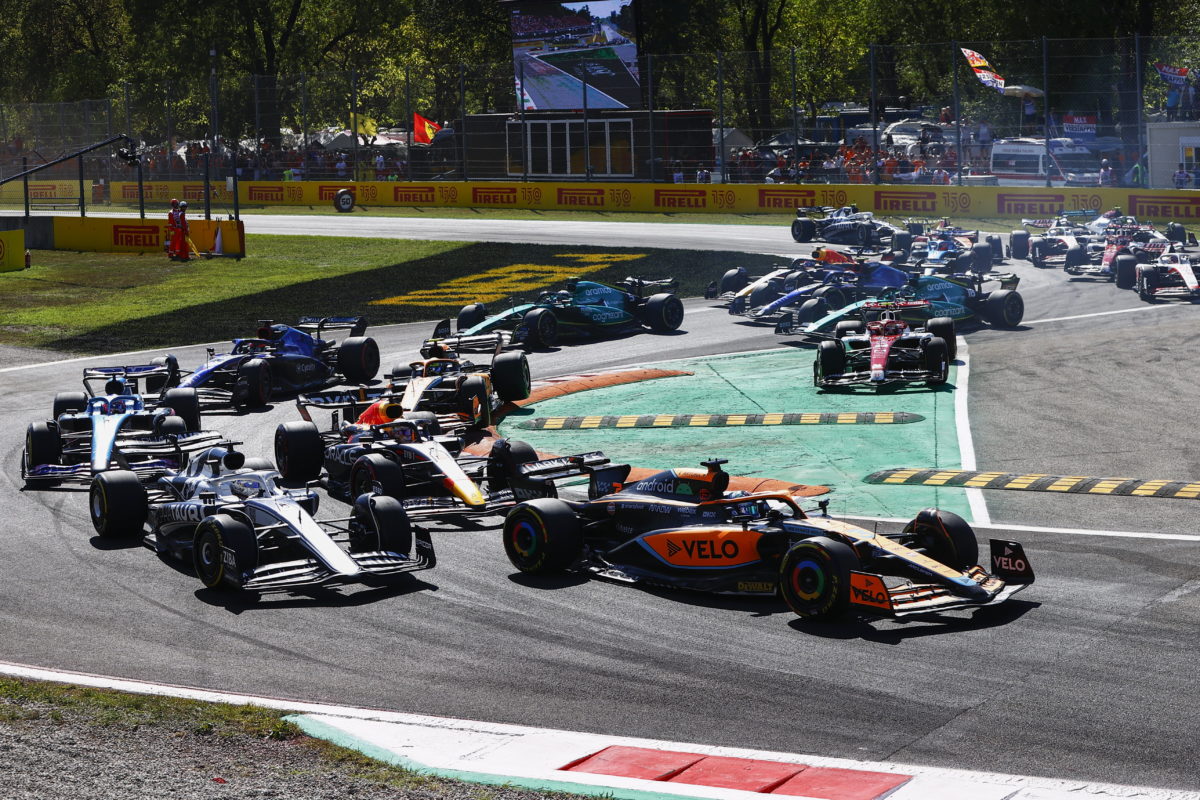

McLaren remained silent during the protracted saga surrounding Oscar Piastri, Alpine, and Daniel Ricciardo. Now the dust has settled, McLaren Racing CEO Zak Brown spoke at length with Mat Coch, Speedcafe.com’s Formula 1 Editor in conjunction with RacingNews365 on a range of topics for a series of articles that have been published over recent days, with this the final instalment.
McLaren Racing CEO Zak Brown believes most Formula 1 teams are now profitable because of the introduction of Financial Regulations.
Limits were introduced last year on what teams can spend in developing their cars in a move designed to both level the playing field and ensure the economic sustainability of the sport.
Previously, at least one team was at risk of collapse at any given time.
The Financial Regulations have quickly become a critical component in the growth and health of Formula 1 and is why the likes of Brown and his counterparts at Ferrari and Mercedes have called for breaches to be treated harshly.
Red Bull, Aston Martin, and Williams all failed to obtain a Certificate of Compliance for last year’s finances – the latter two with procedural breaches and the former with a ‘minor’ overspend.
Brown has since written to FIA President Mohammed Ben Sulayem suggesting a penalty, with his motivations both sporting and commercial.
His rationale is that not only has Red Bull obtained an advantage on track by the overspending, but by breaching the regulations it threatens a key fact that underpins the health of all teams.
In short, what on the surface is a ‘minor’ overspend has the potential to shake the sport to its very core.
“Critical,” Brown responded when asked how important the cost cap is in running a profitable Formula 1 team.
“If you didn’t have a cost cap, you’d spend as much as you can afford to lose.”
What teams can afford to lose varies up and down the grid, with each team having different reasons for going racing.
Ferrari does so to advertise its cars, though motorsport is also a core value within the business.
Mercedes is a shareholder, along with Toto Wolff, in the operation which runs its factory effort, while others like Sauber and Williams are effectively an investment.
Red Bull meanwhile is something of a passion project for Dietrich Mateschitz, the company’s owner, while also offering a flagship advertising product with global appeal.
As a result, all have different ambitions for their involvement in the sport, and simply making money is not necessarily high on their priorities.
Prior to the Financial Regulations, that created a scenario where an automotive manufacturer with nearly limitless resources was competing against privately owned teams without such luxuries and with conflicting motivations.
Those differing interests created an unhealthy environment that was unsustainable for anyone looking to run a business in the traditional sense: to earn a profit.
Since last year, that situation has been changing and Brown suggests the financial health of the current Formula 1 grid is as strong as it’s ever been.
“I think seven [teams] probably run at the cap,” he explained.
“I envision there being a day where they all run at the cap.”
It’s a simple statement but one that highlights the health of the sport; if teams are running at the cap it is because they can afford to do so. That means they are, at worst, breaking even or there is enough perceived value in that investment to justify it.
“I don’t think there’s profitability all the way down because of the lack of sponsorship I see on some of the cars, but I think there’s a path for every team to be profitable,” Brown observed.
“But you need more. If I look at the Williams or the Haas, I don’t see lots of sponsors.
“But I think now there’s a cap, there’s no reason why, by looking at our sponsorship portfolio and our Formula 1 revenue, there’s no reason why someone can’t replicate that.
“It’s not easy, but there’s nothing stopping them,” he added.
“I, therefore, don’t see a reason why there isn’t a day where all 10 teams are profitable.”
McLaren is currently not profitable, though it will be soon and it is currently cashflow positive, according to Brown.
The flow-on of the current health of the sport is the increase in value for teams.
When McLaren took on new investment in December 2020, the value of the team was put at £560 million. Dorilton Capital purchased Williams around the same time for a reported $200 million.

A year ago, Sauber Motorsport, which races under the Alfa Romeo banner, rejected a £300 million buy-out offer from Andretti Autosport. German carmaker Audi is now in the process of acquiring the team.
“I think Formula 1 teams now are like all sports, they’re going to be about franchise value growth,” Brown suggested.
“If you look at NFL teams, or baseball teams, or NBA teams, Premier League teams, they don’t necessarily all make a lot of money, the money’s in the franchise growth.
“Take Alfa Romeo [Sauber], owned by a wealthy entity.
“While I’m sure he’s put in a lot of cash, the numbers I hear on what Audi is supposedly investing, he will have got that money back at a premium.
“So I think as long as people can afford the cash flow game, they’ll get their money back and then some as an investor, from a franchise growth scenario.”
Sauber Motorsport has comparatively few sponsors but is owned by Longbow Finance, which has links to billionaire Finn Rausing who has an estimated net worth of $8 billion. There are thought to be others involved too, whose wealth dwarfs Rausing’s.
They can therefore afford to prop up the team out of their own pocket to a point, safe in the knowledge that the soaring value of a Formula 1 franchise will more than offset that investment.
It also goes some way to explaining the obstinance when it comes to allowing entry to an 11th team as not only does it dilute the prize money pool but also cheapens the value of a franchise.
Using a Formula 1 team as an investment rather than an advertising beacon is a comparatively new model, with stickers on cars not necessarily a sign of the underlying health of each operation.
Of course, the less money you have to chip in means when you finally sell, the profits are greater.
It means stickers are now more indicative of a business without the need for top-up investment than necessarily running at a loss.
“They might not be in trouble because they can afford not to have stickers,” Brown explained.
“But I think if you look at a car and you don’t see lots of stickers, that it’s probably safe to assume whoever owns that team is still putting money in.
“Doesn’t mean they’re in trouble though, because that owner could afford… what I now see in Formula 1 is every team can afford to be in Formula 1, even if that means putting money in.
“Dorilton seems very committed to Formula 1, so even though we look from the outside, being that they’re having to put money in, I think they have liquidity to do that, and if they play the long game, the franchise growth will give them their money back with a return.”
That commercial health among teams has another knock-on in that it makes the sport more appealing to blue-chip companies. McLaren boasts the likes of Google and Microsoft on its car, and Coca-Cola, while Amazon is associated with Formula 1 itself.
It’s a situation that is fundamentally underpinned by the Financial Regulations, demonstrating just how critical the concept of a cost cap is to the ongoing health and success of Formula 1.
Without it, the notion of franchise growth evaporates and the likes of Dorilton (Williams) and Longbow (Sauber) (among others) are suddenly left with businesses that lose money without any hope of recovering it.
That is a situation that has likely just one outcome.






















Discussion about this post